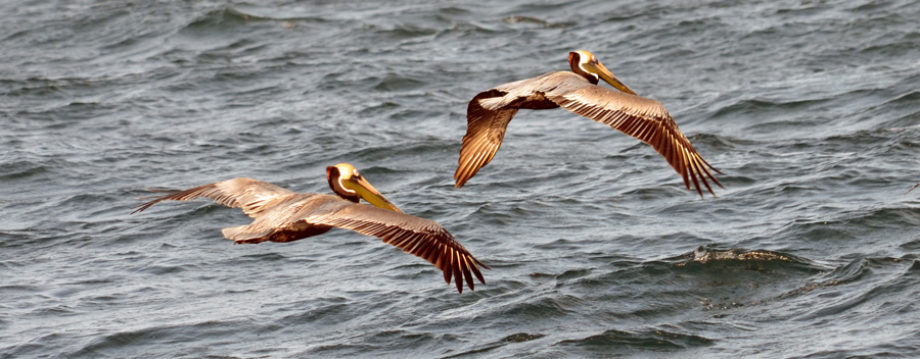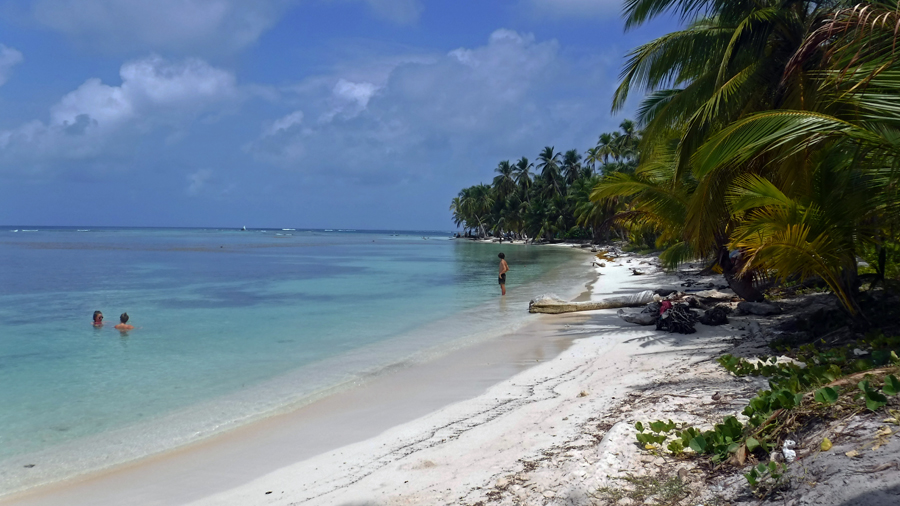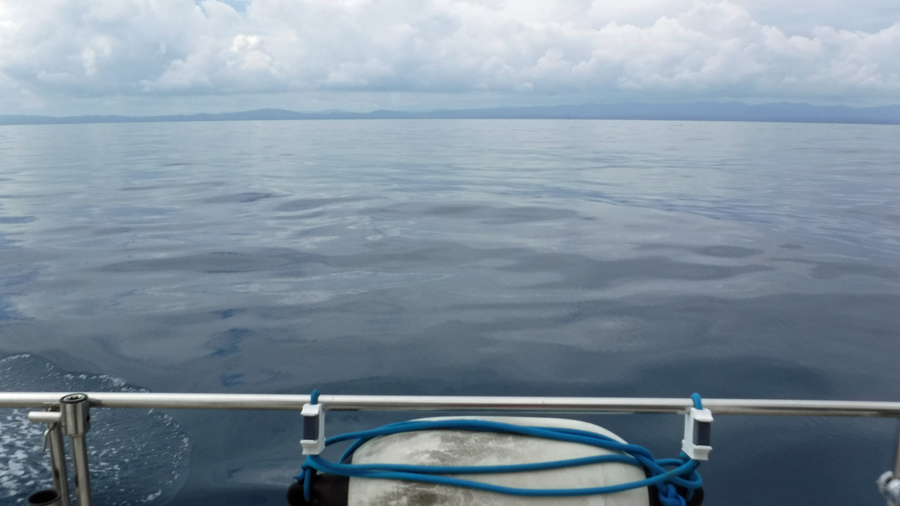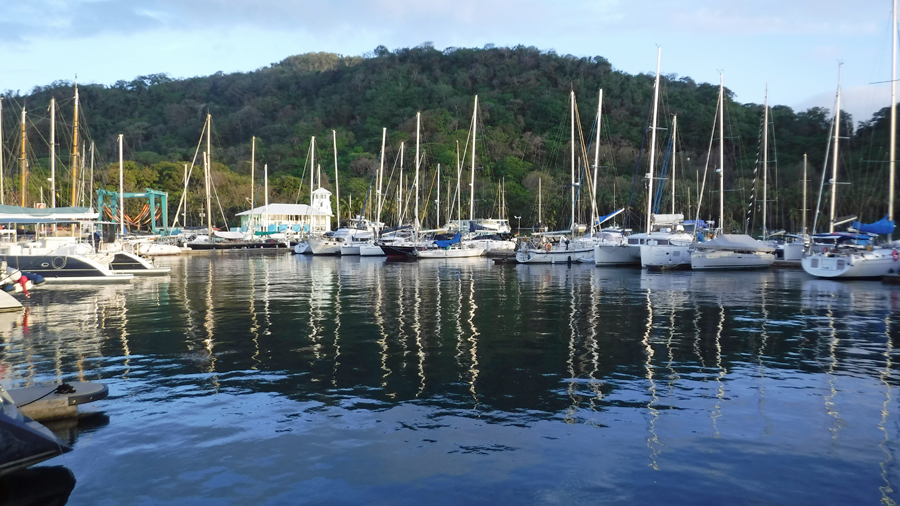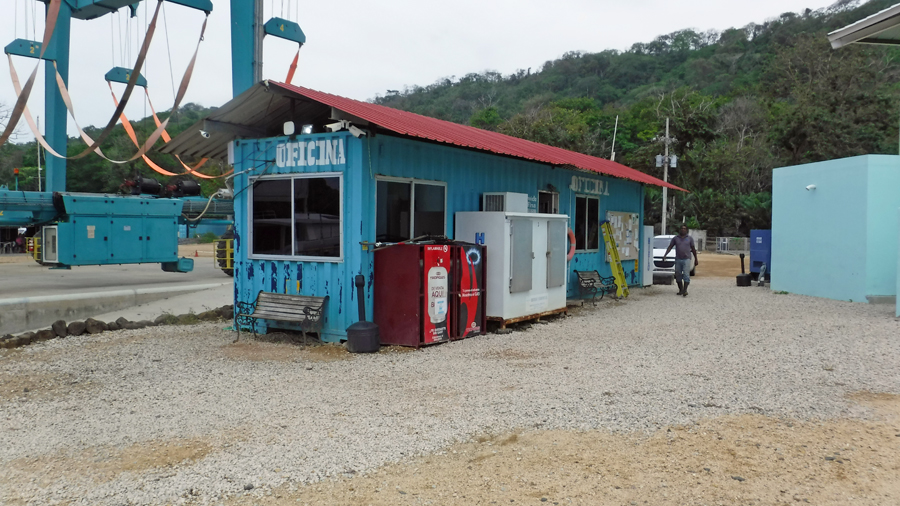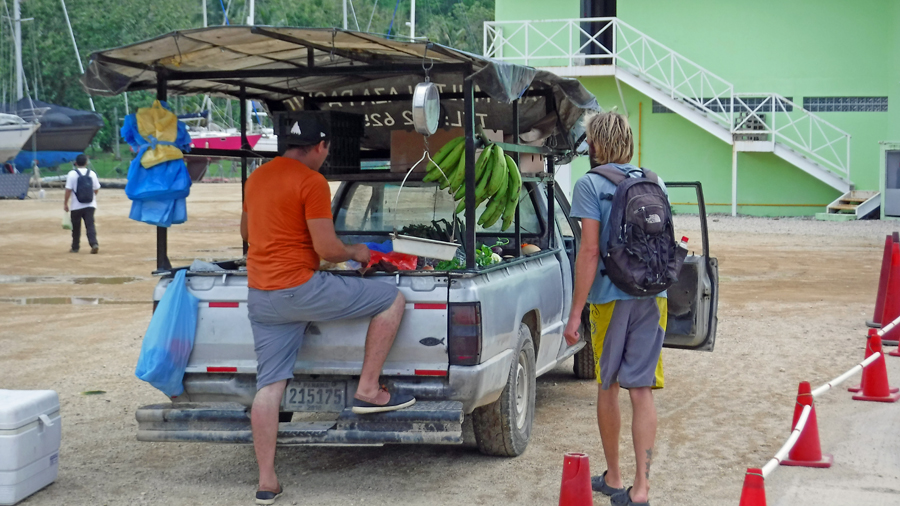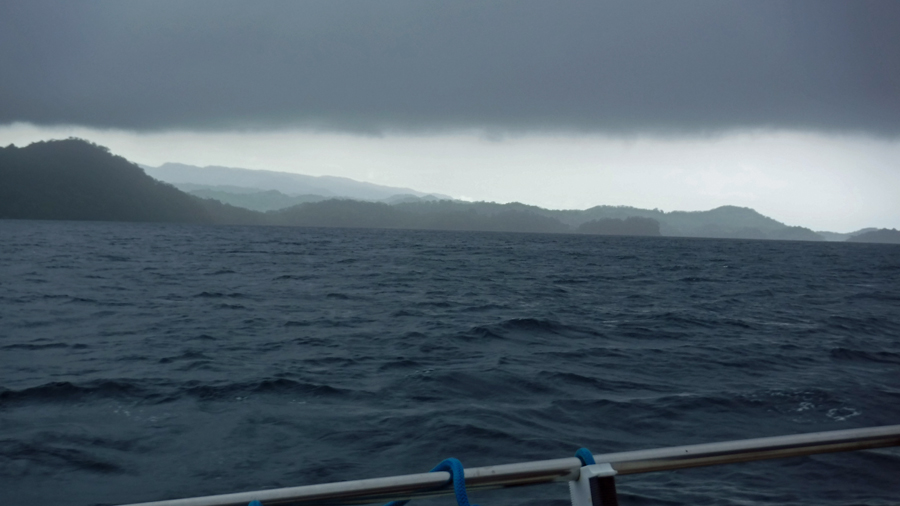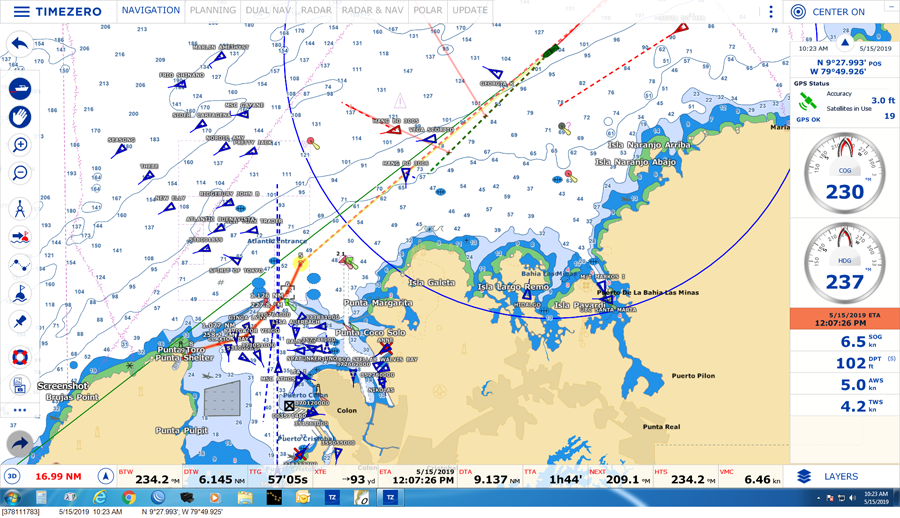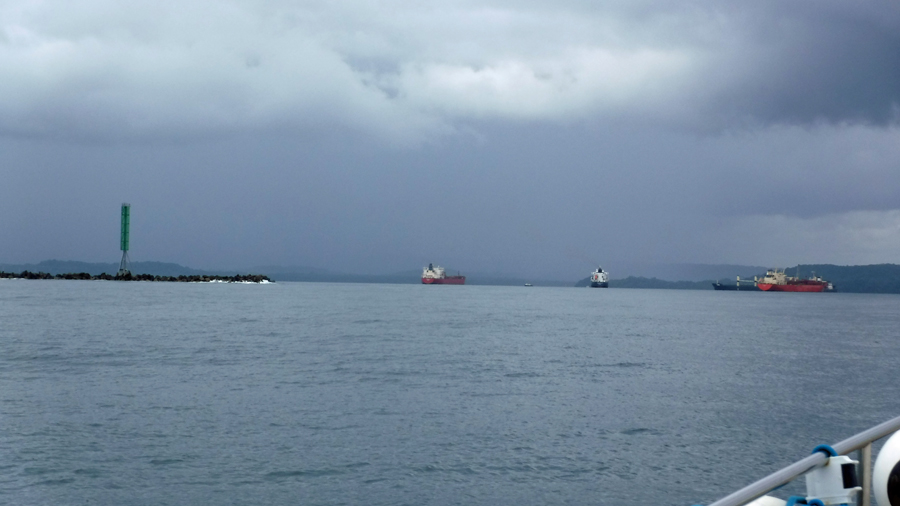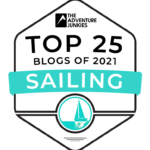The canned ham is gone and the rains are here. We have absolutely loved our time in the San Blas Islands. The Kuna Yala region of Panama is a little slice of heaven on earth and every day was like a dream come true. The San Blas are exactly what we dreamed about when we were both in the rat race hoping one day we’d sail away over the horizon. Isolated palm covered islands spattered among coral reefs in clear waters with a small population of people who are welcoming and friendly demonstrate living today without electronics is still possible. Every once in a while a destination delivers more than we anticipate and this was one of those magical places. But alas, all good things have to end and it is time for us to move on.
The rainy season is here. May is the beginning of the onslaught for things to come. And as if Mother Nature had a calendar with the date circled, the rains began right on time. It started with a few cloudy days and the winds slowly became light. The clouds never fully went away and the light winds became doldrums. Without the wind the heat becomes intolerable even when cloudy. Then it rained. And, it rained. We continued to hang about a small group of islands called Coco Banderos. Snorkeling is still possible in the rain. The rains will continue and at their height develop into large storms packing a lot of lightning. Lighting is not good for boats.
The cruising boats in our area have dwindled down to just two of us. Our neighbors are a very nice couple from Namibia. Don’t worry, I had to Google it too. Namibia is the country just north of the Republic of South Africa and has a population of 2.5 million people. We somehow managed to accumulate an awful lot of mangoes due to our confusion with a delivery of fruits and vegetables to Cream Puff by a Kuna boat. We shared our bounty with them and also managed to unload some well read paperback books. In our conversations, Cindy and I came to realize how lucky we are to reside in one of a group of countries who honor each other’s passports and do not require short term visas in advance. Namibia has no agreements and citizens need to obtain visas, often in advance of the travel. This can be a complicated process. They made us laugh when telling us about their experience checking into Panama, one of the few countries where no additional visas are required for them. The immigration officer picked up the phone and had to call at least a dozen people to find out if Namibia was actually a country.
Pulling up the anchor for the last time in the San Blas and heading westward is part of a trek to get to Colón. We are not excited about Colón as we have not heard anyone say anything nice about this city, ever. Some European friends described Colón as, “Beirut, but without the bullet holes”. Most recently, some American friends had to check in there upon arrival in Panama with customs and immigration. When their cab stopped to drop them off outside the government building, looking around, they turned to taxi driver and said, “Don’t you dare leave us here. We will pay you to wait for us.” We wonder, can it really be that bad?
Our first stop exiting the Guna Yala region was where we entered. This short little sail, meaning motor, took us to Chichime Island where we stopped overnight. At first light we departed Chichime and set off for Linton Bay Marina in Puerto Lindo. The sea was the calmest we have ever seen. Not a puff of wind was to be found anywhere.
We arrived in Linton Bay Marina and checked the weather for the next few days. Our hope was to have one day somewhere in the near future with enough wind to continue the next 30 mile jump to Colón without having to motor. No such luck. Our next objective was to look at the days with the least amount of rain. Amazingly, we are due to arrive at Shelter Bay Marina (Colón) on the exact day of our reservation we made about 6 months ago. This almost never happens in our world. Delays due to weather or breakdowns are inevitable. The odds of us doing this are astronomically against. Perhaps it’s time to buy a lottery ticket.
We have been self sufficient on Cream Puff for about 7 or 8 weeks. Meaning, other than fresh veggies, we have not purchased any foods, fuel or water. Cindy’s provisioning in Colombia was perfect. We are just starting to run out of stuff. She has about 7 days of meals remaining for us and this is just enough to get us to Colón. I know I have talked about magic Bimbo bread in the past but it still continues to amaze me. We have hotdog buns we purchased in Columbia. In Colombia, like the rest of the world, hot dogs and hot dog buns are not sold in packages of equal quantities. There are always going to be extra buns or hotdogs. We happen to have two extra hotdog buns. There are sitting in a dark dry cabinet. The package was opened about 6 weeks ago and we used what we needed. Rather than throw away the remaining pair of buns, I thought it’d be fun to see how long they last. They are now about 9 weeks old and are still soft and free of any mold. Keeping in mind we live in a warm, damp and humid environment ideally suited for mold. This bread is remarkable.
The first night in Linton Bay Marina bought some heavy overnight rain. The rain washed off any salt residue from the Puffster saving me from having to do it the next day. Enjoying full time air conditioning and rocking fast Wi-Fi we become very lazy very quickly. One afternoon we binge watched a series on Netflix. The marina is a smallish facility with a boatyard and fuel dock. It is a little bit in the boondocks so there is not much to do within walking distance. There is a restaurant open a few nights a week but we’ve decided to save our first meal out for the marina in Colón. We are just chilling in the air conditioning.
In our lifestyle, it is funny how something changes because of one small event. Our planned evening meal was some dehydrated ravioli we procured in Colombia. It is actually much better than it sounds. But as we were checking out of the marina for a planned early morning departure the next day, the veggie truck pulled up. He had lettuce! We haven’t had lettuce in months. I never thought in my wildest dreams I would get excited about fresh lettuce. Most of the Kuna boats offered basics such as cabbage, tomatoes, potatoes, carrots etc. These are long lasting vegetables. Lettuce is not a long lasting vegetable wilting and turning brown quickly. I would imagine by the time it made it all the way to the San Blas islands, it would be inedible. We purchased some fresh vine ripened tomatoes, a cucumber and a couple of loaves of delicious freshly baked bread. Rather than ravioli, our dinner just became a fresh salad with smoked sockeye salmon topped with a balsamic vinaigrette dressing and garlic bread. Yum! We eat well on Cream Puff.
At sunrise, about 6 am, we had a quick breakfast untied Cream Puff and departed Linton Bay Marina about an hour later. The weather forecast called for a mostly cloudy day with afternoon rain. We dodged the remnants of some overnight thunderstorms. It has now begun to thunder every night usually in the wee hours of the morning. There was one particular nasty cell out to sea we just barely avoided on our short trek west to Colón. We watch as it passed behind us and made for a spectacular scene as the clouds nestled atop the shoreline mountains.
AIS stands for automatic identification system. This is a required automatic tracking system using transponders on ships over 300 gross tons on international voyages. It reports and receives information about the ship but more importantly shows the direction and speed the ship is moving allowing all surrounding vessels to evaluate a course to steer and avoid a collision. The information is radioed ship to ship automatically every few seconds by the AIS unit. For private vessels AIS is voluntary. However, I cannot imagine any safety conscious sailor opting to forego a tool making them seen to surrounding traffic. Most cruising sailors have what is called a Class B AIS. It is less powerful than the Class A commercial version used on ships. I installed a Class A AIS system on Cream Puff prior to us departing on this wacky adventure. It was more expensive than the Class B system but in my opinion, being seen and being able to see for greater distances on the ocean was well worth the extra money. The range of a Class A system is about 20 miles compared to the approximate 10 miles of the Class B system. Our AIS is connected to our ship’s computer displaying ships on our electronic charts viewed on our monitor. As we approached Colón this is a screen shot of the plotter. The blue triangles represent anchored ships. The red triangles are moving ships within five miles of us. The orange line is our course and the green boat is Cream Puff (top right). The dotted lines in front of moving ships (blue if outside of five miles, red if within five miles from us) indicate the course and where the ship will be located within the next 30 minutes. Can you imagine coming into this area without AIS during a thunder storms with limited visibility finding yourself surrounded by over 45 cargo ships? Neither can I.
We arrived in the Colón area about three hours ahead of the rain and had the Puffster settled in a slip at the marina once the skies opened. In route, we managed not to hit any big ships and made sure we stayed well out of their way. So why are we in Colón? It is a city we obviously don’t want to be in. It has a bad reputation for high crime and based on what others have told us is not tourist friendly or picturesque. The answer is a simple one. This is the entry point for the Panama Canal.
